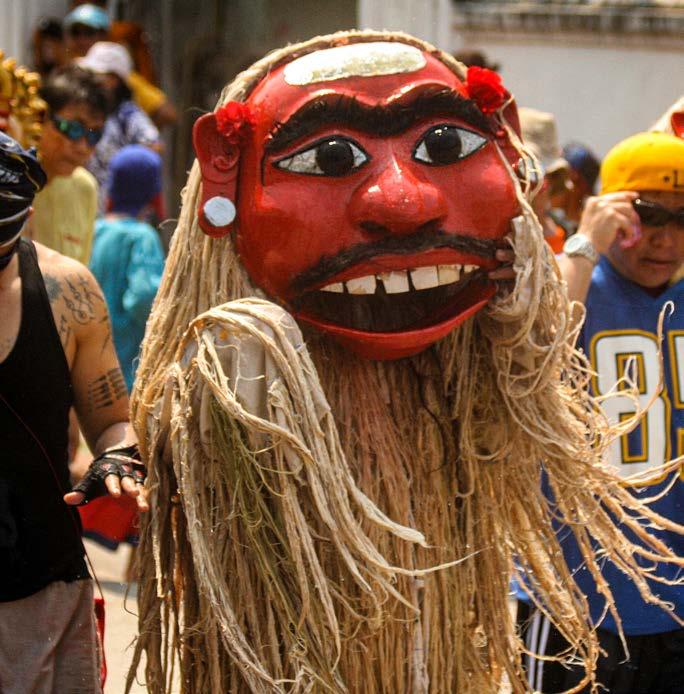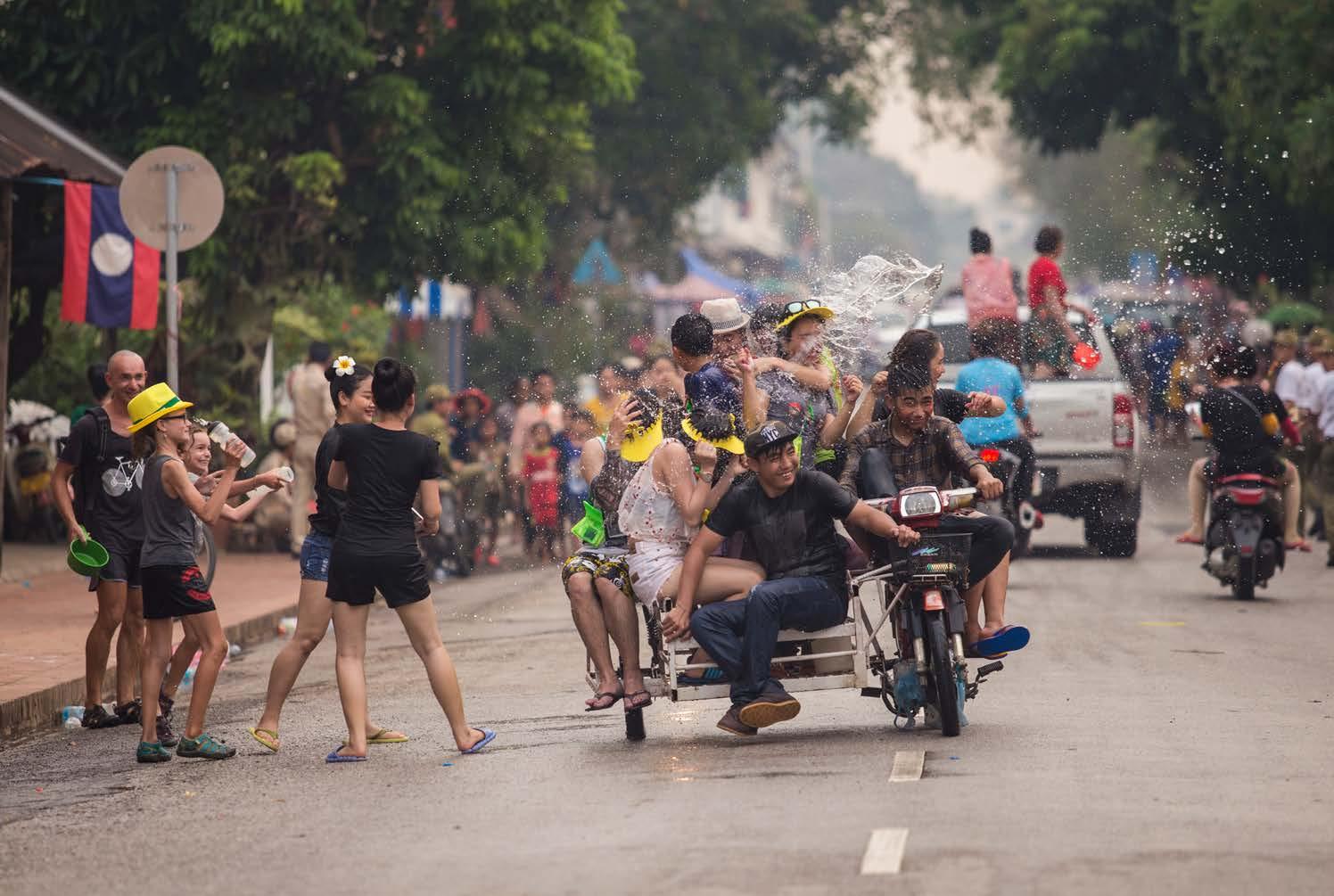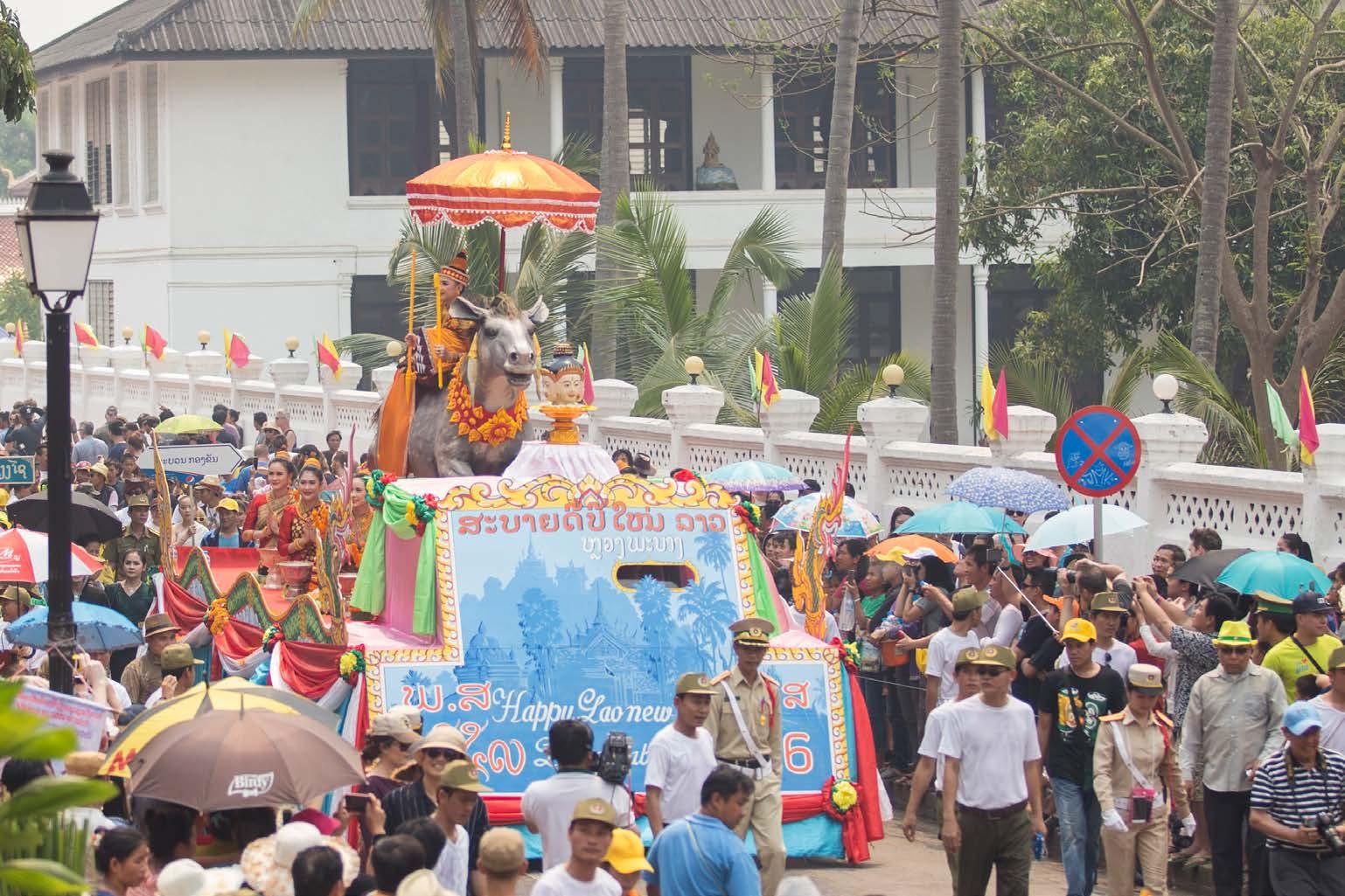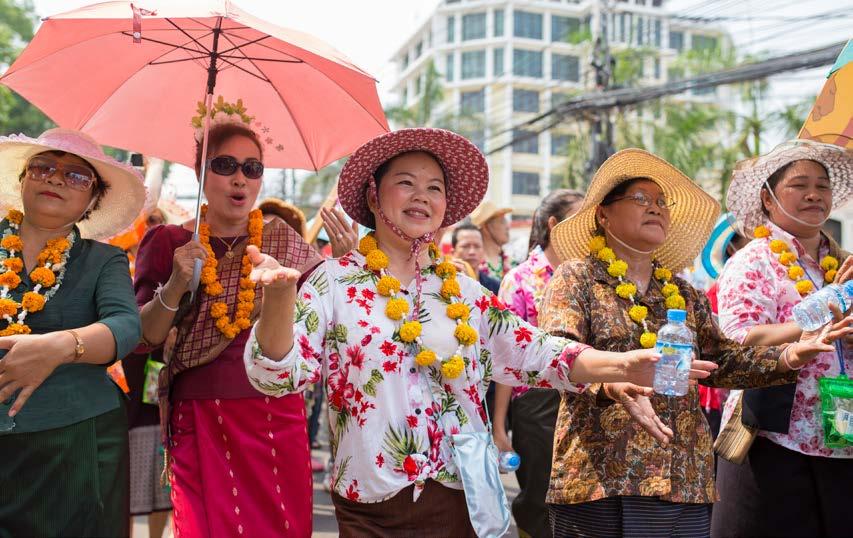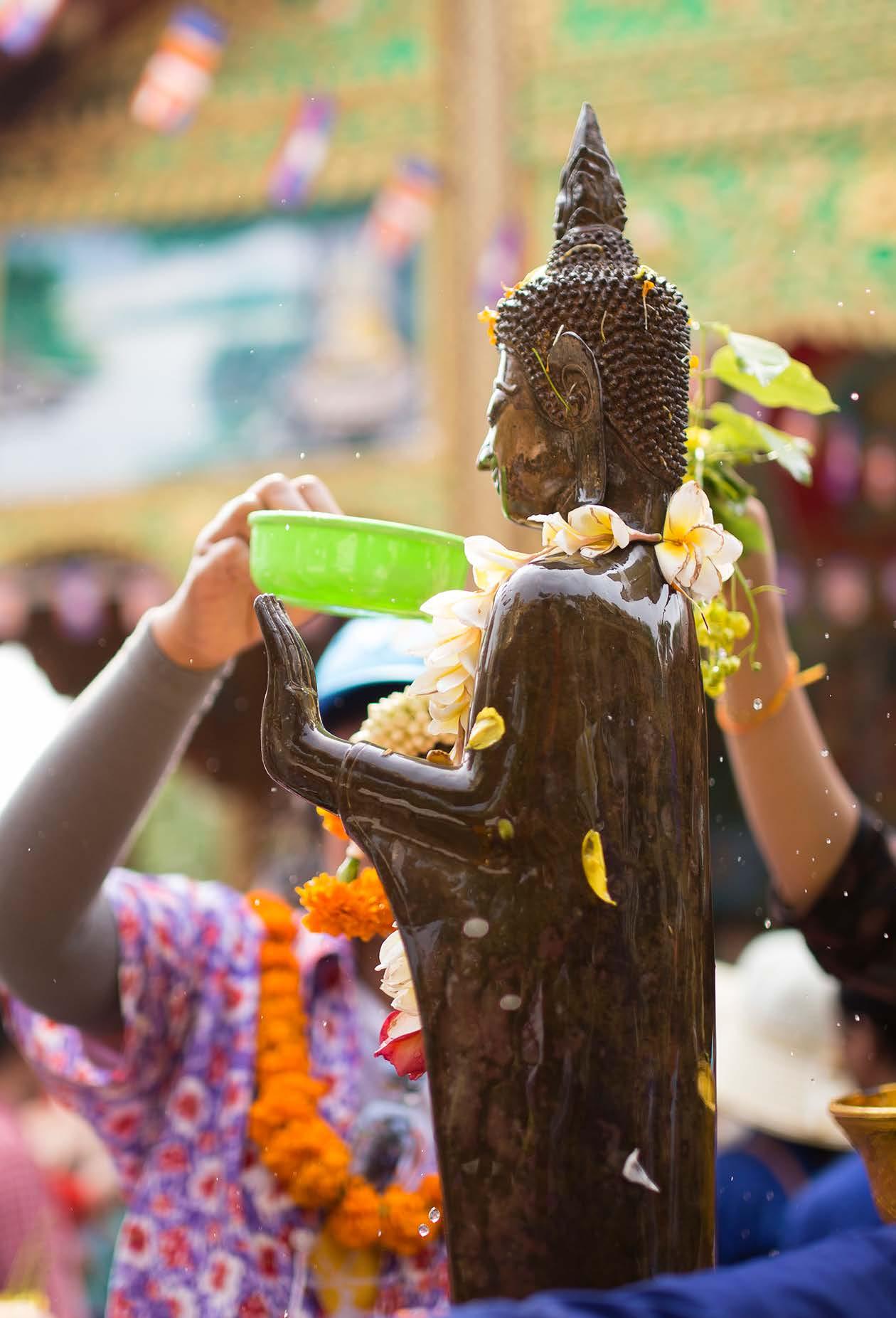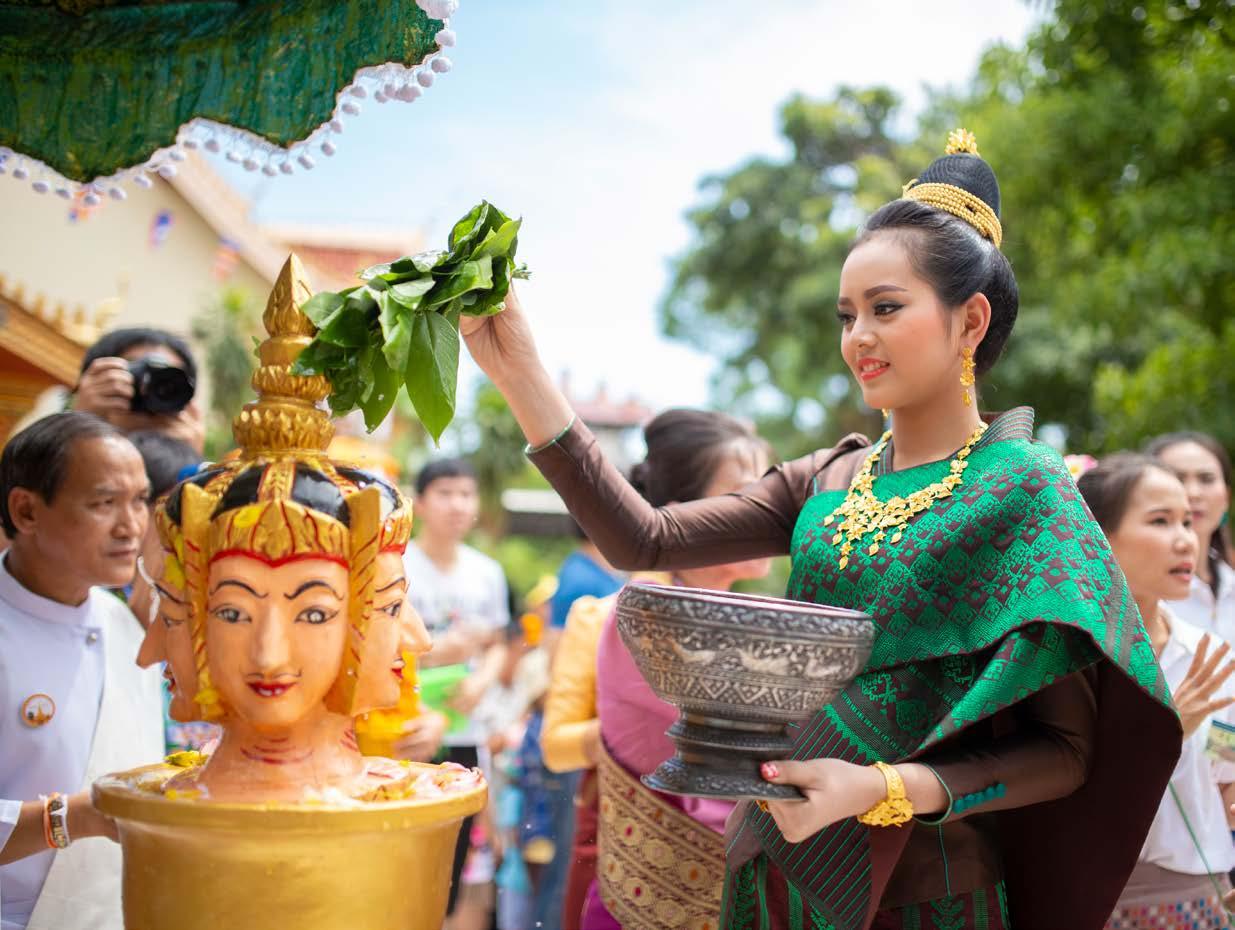
2 minute read
PI MAI - THE LAO NEW YEAR
Text by: Jason Rolan
Photos by: Phoonsab Thevongsa and Anita Preston / Evensong Film
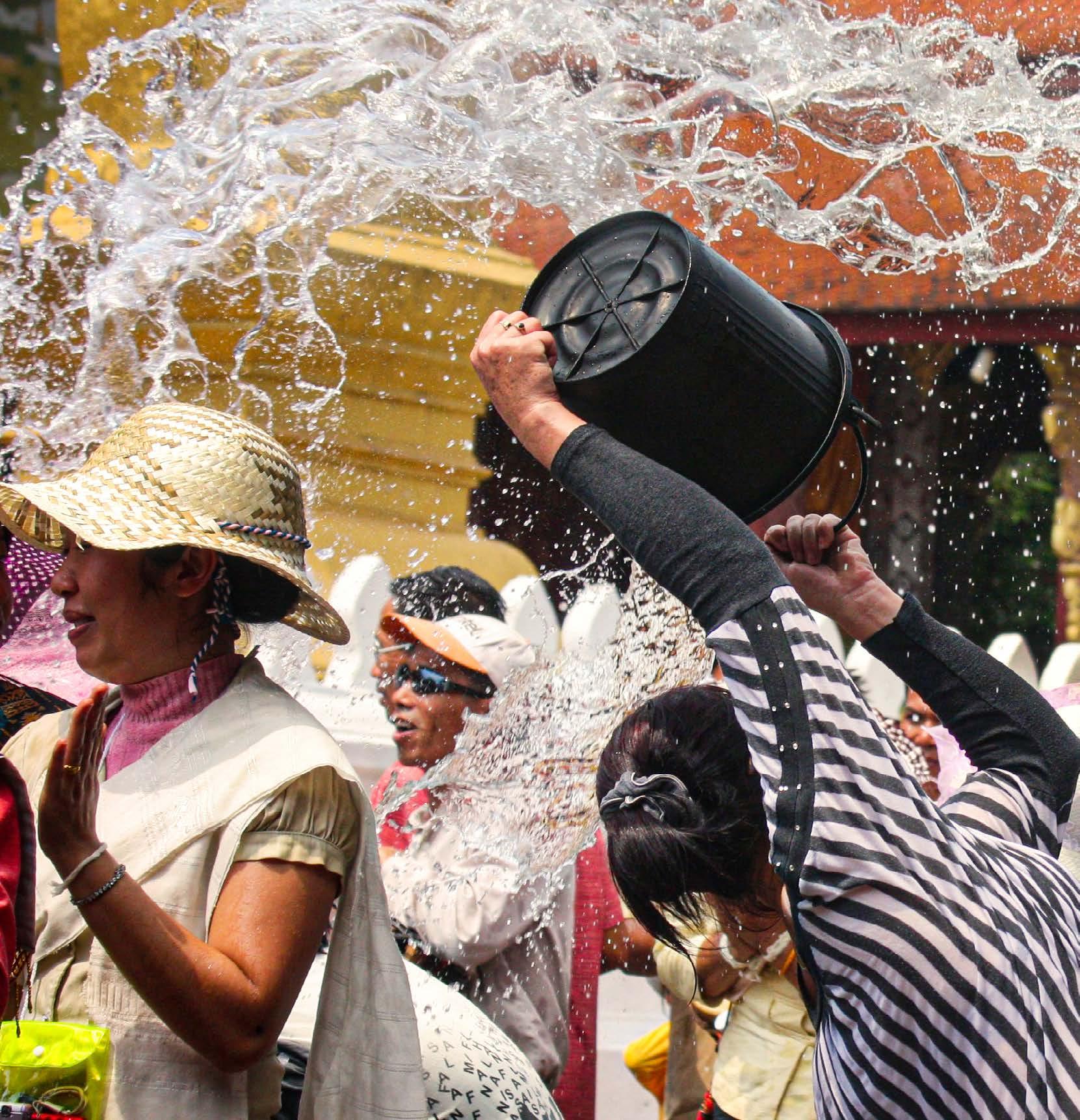
Dawn breaks over another sweltering April morning in Luang Prabang, but today's sticky sweat will soon be washed away by a city-wide catharsis called Pi Mai. You notice it first in the faces: the usually reserved Lao smiles crack wider, mischievous glints flash in elderly eyes, and soon enough, total strangers are drenching each other in ritualized chaos. In local parlance, it's all about "hoht nam," or the pouring of water – but that polite phrase hardly captures the magnificent mayhem that transforms the capital's sleepy streets into a three-day water war.
B eneath the surface-level soaking lie complex layers of tradition that define Lao New Year. Monks still file silently through dawn mists collecting alms, while families gather for baci ceremonies where cotton strings bind wrists and blessings. In living rooms that smell of grilled fish and fresh herbs, grandmothers bark orders as daughters pound chilies and lime into laap, minced meat salads. The temples hum with prayer and
purpose, Buddha images bathed in jasmine-scented water by worshippers shufflling past in silk finery. It's a festival where sacred and profane collide – one moment, you're receiving a solemn blessing from elders, and the next, you're ambushed by gleeful kids armed with water pistols and buckets of ice water. And somehow, in the hot heart of Laos, it all makes perfect sense.
